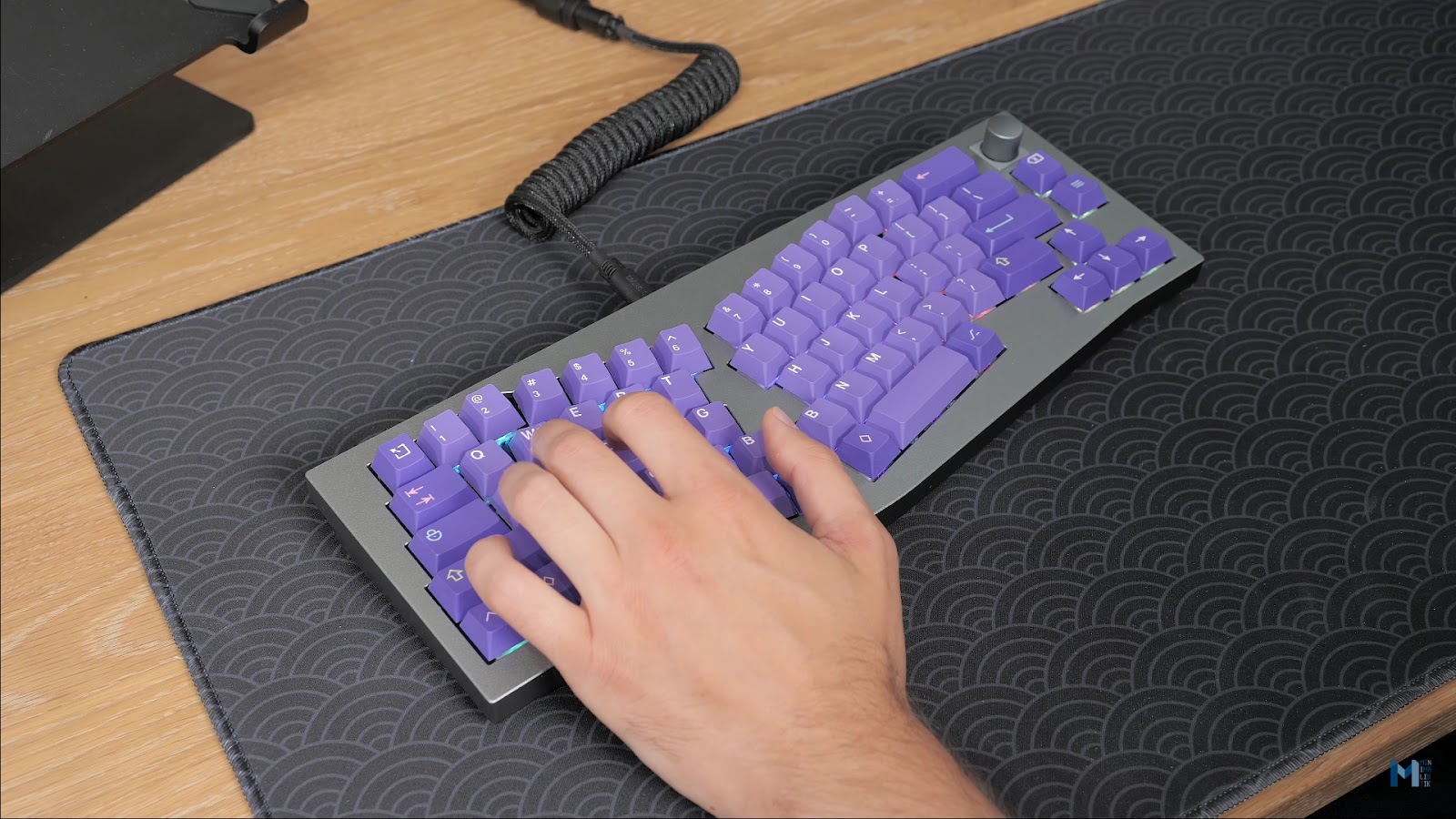At first glance, the prospect of typing in Hebrew can appear intimidating due to its distinct right-to-left alphabet. However, there’s no need to worry! This guide aims to demystify the Hebrew keyboard layout, clarifying the arrangement of letters, vowels, and unique characters. We’ll investigate how it relates to the familiar QWERTY layout and delve into the nuances of Hebrew typing, empowering you to become proficient in no time. Prepare to delve into the realm of Hebrew communication as we unlock its mysteries together!
Exploring the Essentials: Understanding the Hebrew Keyboard Layout
Dedicated to the profound and ancient Semitic language, the Hebrew keyboard layout is meticulously designed to cater to writers, professionals, and everyday users of Hebrew. Unlike its English counterpart that aligns with the well-known QWERTY configuration, the Hebrew layout exhibits a unique scheme, tailored to the Hebrew alphabet and its distinct features.
Key Components of the Hebrew Keyboard Layout
To enhance your typing experience and make the transition seamless, it is crucial to understand the key features of the Hebrew keyboard layout.
- Right-to-left Flow: Mirroring the natural progression of Hebrew text, the Hebrew keyboard layout adopts a right-to-left orientation. This design falls in line with the way Hebrew is traditionally written and read, making it intuitive for native speakers and learners alike;
- Alphabetical Order: A marked departure from the QWERTY setup, Hebrew keyboard keys are arranged alphabetically. This formation simplifies the quest for specific letters, making typing more convenient and faster for Hebrew speakers;
- Shift and Alt Gr Key Roles: Just like other keyboard layouts, the Hebrew keyboard relies heavily on the Shift and Alt Gr keys. These keys unlock additional characters, symbols, and punctuation, enabling users to smoothly switch between Hebrew and English as required;
- Inclusion of Vowel Marks and Diacritics: For a comprehensive experience, the Hebrew keyboard layout incorporates keys for vowel marks and diacritics. These are integral elements in the Hebrew language, crucial for accurate pronunciation and proper grammar. The keyboard positions these elements for ease of use, helping users create high-quality, error-free Hebrew texts.
With a thorough understanding of these key aspects, users will find the Hebrew keyboard layout less daunting and more user-friendly. This knowledge will pave the way for an efficient and effective typing experience in Hebrew.
Unveiling the Advantages of Engaging with the Hebrew Keyboard Layout
Bolstering Typing Proficiency
Adaptability to the Hebrew keyboard layout supports users in enhancing their typing speed and precision, thereby catalyzing seamless communication and heightened productivity. It fosters a quicker response time and more precise keystrokes, making written communication an effortless task.
Conserving Cultural and Linguistic Legacy
In the digital age, the Hebrew keyboard layout serves as a significant tool in safeguarding the traditions of the Hebrew language and preserving cultural individuality. It helps carry forward the legacy of a rich and ancient language, connecting users more deeply with their lineage and roots.
Promoting Global Connectivity
Owing to the leaps in technological advancements, the Hebrew keyboard layout is globally accessible. This accessibility invites individuals of varied origins to effectively engage with and learn the Hebrew language, fostering an inclusive environment.
Supporting Educative and Professional Endeavors
The mastery of the Hebrew keyboard layout extends immense benefits to learners, teachers, translators, and professionals in domains such as media, academia, and translation services. It facilitates the efficient creation of documents and smooth communication, enabling the production of quality work in various fields.
Mastering the nuances of the Hebrew keyboard layout not only offers practical assistance in typing but also unlocks new cultural insights, promotes inclusivity, and supports various professional and educational pursuits. This makes it an invaluable skill to have in a globally connected and digital-first world.
Maximize the Potential of the Hebrew Keyboard Layout: Strategies and Tips
Mastering the Hebrew keyboard layout is a skill that can be acquired through a combination of regular practice, utilization of keyboard shortcuts, understanding of device settings, and recognized awareness of advancements in technology.
Fine-tune Typing Skills with Constant Practice
One of the most effective ways to become proficient in using the Hebrew keyboard layout is to practice typing consistently. Whether you’re composing an email, drafting a structural document, or simply writing a casual text, every interaction on the keyboard will gradually improve your typing speed and accuracy. It helps build muscle memory, making locating keys more instinctive and reducing errors over time.
Leverage Keyboard Shortcuts for Efficiency
Keyboard shortcuts can significantly enhance your efficiency in typing and navigating through texts. By learning these shortcuts, you can perform tasks like toggling between languages, inserting special characters, deleting text, or moving the cursor, all without reaching for the mouse. It reduces time spent on repetitive tasks, streamlining your workflow and making typing more comfortable.
Customize Language Settings for Optimum Use
Each device comes with specific language settings that allow users to tailor the keyboard preferences to their needs. Understanding these settings and making necessary adjustments can optimize the functionality of your Hebrew keyboard layout, making it more user-friendly and aligned to your typing habits.
Keep Pace with Advancements in Keyboard Technology
Just like other tech peripherals, Hebrew keyboard technology is continuously evolving. By staying updated with the latest advancements, new features, and improvements, you can ensure to capitalize on the fullest potential of the keyboard layout.
By following these strategies and tips, you can significantly boost your typing prowess on the Hebrew keyboard layout, ensuring a faster, more efficient, and enjoyable typing experience.
Conclusion
The Hebrew keyboard layout presents a user-friendly typing interface for those familiar with the conventional QWERTY setup, albeit with a reorganized arrangement of letters tailored to accommodate the Hebrew alphabet. Mastery of this layout grants the ability to fluently type in Hebrew on your computer, although some knowledge of additional key combinations for vowels and diacritics may be required. Delving into more intricate features such as final letter forms or Biblical Hebrew notation could prove advantageous, prompting exploration of alternative keyboard configurations like the “Biblical Hebrew Trio.” Regardless of the specific layout chosen, proficiency in the Hebrew keyboard unlocks pathways to effective communication and creative expression in this culturally rich and ancient language.



